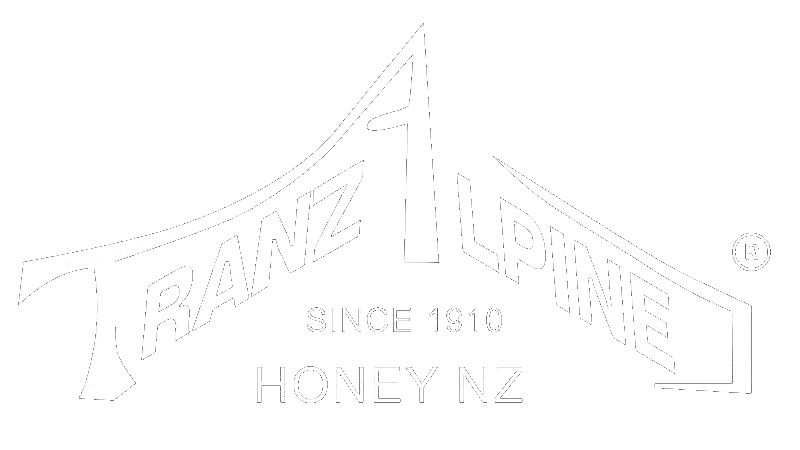
Mānuka Honey: MGO Ratings and the New Zealand Government’s Science Definition
Every jar of TranzAlpine Mānuka honey is labelled with numbers which show the strength of its MGO content and confirm it is genuine Mānuka Honey.
Want to know exactly what it all means? We asked the experts to explain what the numbers stand for and why they are on the label.
Mānuka honey is a complex honey that goes far beyond a simple table honey.
We like to think of it as the ultimate combo of plant power and bee magic –the powerful properties of the Mānuka tree combined with the goodness of honey.
Mānuka honey has been the focus of extensive scientific research evidencing remarkable natural qualities that set it apart from other honeys.
Mānuka Honey and Wellbeing
As much as we’d love to, due to New Zealand’s food regulations, we’re unable to talk about the health applications and effects of Mānuka honey.
All honey contains a range of proteins, vitamins, minerals, enzymes, phenolic acids and flavonoids that may be responsible for the traditional benefits. But Mānuka Honey has something a bit extra.
We know Mānuka honey is a family favourite because people tell us this all the time! Fans tell us they like to use it as a winter wellbeing remedy, a natural boost or as a wholefood alternative to refined sugar.
What does MGO/MGO mean in Mānuka Honey?
The large number on the front of every jar of TranzAlpine Mānuka honey is its MGO rating – which shows the strength of the honey’s antimicrobial activity.
MGO is short for methylglyoxal, the naturally-occurring chemical unique to honey made from nectar gathered from the Mānuka bush. Scientific tests have shown this chemical has antimicrobial properties and the more the honey contains, the greater its bug-fighting power.
The MGO scale starts around 50 and goes right up to 650. As a general rule, honey with an MGO rating between 50 and 100 is ideal for daily use, while honey with an MGO rating of between 100 and 250 is better for an extra boost, and anything above 250 is a maximum strength product best for occasional use when you really need it.
How do we know what MGO rating each jar of honey has?
“We test all our honey to establish its MGO level inn an independent laboratory when it is extracted, which means we can guarantee the MGO rating stated on the label is correct and true to the label.”
New Zealand Mānuka Honey Science Definition
Each jar of TranzAlpine Mānuka honey meets the strict definition of Mānuka Honey set by the New Zealand Government and is Tested Certified Mānuka.
This means each batch has been tested at an independent laboratory for five key markers which prove the honey was made from nectar gathered by bees from the Mānuka bush. The markers are made up of four naturally-occurring chemicals and one DNA marker from Mānuka pollen.
Mānuka Monofloral or Mānuka multifloral – and a whole load of numbers.
Our jars also state the honey is either “Mānuka” or “Mānuka multifloral”. This tells you whether the honey is made predominantly from nectar from the Mānuka bush (monofloral) or from a combination of Mānuka and other flowers (multifloral).
Independent testing establishes how much of each of the five markers is in each batch of honey – and these results are used to determine whether it is monofloral or multifloral Mānuka Honey. Typically, monofloral products contain higher levels of the natural chemicals associated with the Mānuka bush.
There are five key markers which identify whether Mānuka Honey is monofloral or multifloral. The first four are chemical markers known as phenolic acids. Their full names are called 3-Phenyllactic acid, 2-Methoxyacetophenone, 2-Methoxybenzoic acid and 4-Hydroxypheyllactic acid.
For honey to be classed as “monofloral” it has to contain at least 400mg/kg of 3-PLA and 5mg/kg of 2-MAP, as well as at least 1mg/kg of the other two chemicals. “Multifloral” Mānuka Honey contains between 20 and 400 mg/kg of 3-PLA and at least 1mg/kg of the other three chemicals.
All honey which is exported from New Zealand as “Mānuka” must also contain a DNA marker from Mānuka pollen, which confirms it has come from the bush. This is why every batch of TranzAlpine Mānuka honey has been confirmed by independent laboratory testing.
How are the tests done?
Only two independent IANZ laboratories in New Zealand are approved by the NZ Government to carry out independent testing of these five Mānuka markers.
They are Analytica Laboratories and Hill Laboratories.
Four chemical markers are tested using a Government-recommended chemical analysis technique called LC-MS (liquid chromatography–mass spectrometry). It’s a highly analytical technique which is expensive but very reliable and wonderfully precise and scientific, so it is free from interferences which could give inaccurate results.For the DNA testing labs use analytical technique called quantitative PCR, which is also Government-recommended. Their use it for a range of services in the business and it’s a technology which is very well established and there a high degree of confidence in its accuracy.”
Storage Tips
All our honey is 100% natural and as such the colour, texture and taste can vary slightly from batch to batch and can develop with age (just like fine wine).
Mānuka honey should be stored in the pantry, not in the fridge. Cold temperatures can result in the crystallisation of the honey (but don’t worry, the honey is still fine to eat).
Avoid exposure to prolonged high heat to protect the natural properties of the honey.
Pro tip – if ants love your Mānuka honey as much as you do, keep the jar in a shallow dish of water (ants can’t swim!).

